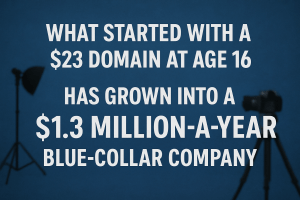You should refinance your mortgage for various reasons, including lowering your monthly payments, switching to a fixed rate, or borrowing against your home equity to get cash out. The refinance process is a bit different from the normal mortgage process. Here are the steps towards successfully refinancing your existing mortgage.
Step 1: Determine the Right Loan for You
There are various loans that you can use to refinance your existing home mortgage. It is up to you to decide which one suits your needs best. To do this, you need to determine what works for you in the current mortgage and the improvements you would like to make.
Remember, it is not the loan that decides the type of home you end up with; but your home is the one that determines the type of loan you choose.
There are various types of loans you can use to refinance an existing loan. You can choose a fixed-rate loan or an adjustable-rate mortgage, a 15-year or a 30-year mortgage, or even go for an interest-only mortgage. The choice depends on what you are looking for and your qualifications.
To determine the type of loan you can qualify for, obtain your credit report and credit score, gather proof of income and prepare a summary of your debts.
Step 2: Perform a Market Comparison
There are various loans on the market. You need to make sure that the loan you choose fits your overall budget. One way to do this is to perform comparison loan shopping.
Here, you get to check out the fees charged by the lender, the interest rates, down payment, monthly payments, and the loan features. The loan features such as terms, interest rate deductions for the auto draft, no prepayment penalty, etc. You also check out the flexibility of the loan, such as alternative payment plans. Speak to several lenders to understand these aspects of the loan and choose the best loan for you. You can compare lenders’ summaries of refinance rates to make your comparison quick and easy.
These features vary according to the loan type and the amount you apply for. Some of the aspects such as the closing costs can be covered by the seller. Consider this when performing market comparison.
Step 3: Submit the Loan
Refinancing a loan is all about clearing an existing loan and taking on a new loan. This means that you start on new terms and new payments. This means you start the loan process afresh. You have to complete the formal loan application by filling in a form and attaching the necessary documentation.
The documents you need to submit, includes the latest bank statements, W2s, and paystubs. If you are self-employed, attach your tax returns and asset documentation.
After this, the loan goes for underwriting. If it meets the conditions, it goes to the next step; otherwise, the underwriter can return it for compliance.
Step 4: Have the Property Valued
Your property has definitely changed since you bought it. This is why the lender performs an appraisal on the property. The role is to determine your loan-to-value (LTV) ratio, which is the ratio of the unpaid principal against the home appraisal value. To be on the safe side, the LTV is required to be 95 percent and below. If you have an LTV of more than 80 percent, you might have to pay private mortgage insurance on the loan.
The aim of appraisal is also to determine the current market value of the property. The lender usually uses the sales comparison approach. Here, the lender compares 4-5 properties within a 1-mile radius. The properties that are used in the comparison need to have the same square footage. The appraiser also checks the property condition, the location, and any upgrades. The result of all these is an appraisal report.
Step 5: Get Your Loan Approved and Receive the Settlement
After the valuation and submitting the support documents, the lender approves your loan request. The lender can request for additional documentation as necessary. After this, the lender settles the loan amount, which means you can now access the funds you applied for.
You Shouldn’t Refinance a Mortgage to Pay Credit Card Debt
Remortgaging is a common choice to gain access to some extra liquid fund that is lying idle in the form of home equities. Sometimes, it is done to clear the outstanding dues, which have gone up to a higher amount. However, remortgage financing should never be used as a financial tool to pay your credit card debt. The following five reasons expound this fact.
You will be converting secured debt into unsecured debt
When you take out a mortgage loan to pay back your credit card debt, you actually convert your unsecured loan into a secured loan. The decision does not prove right in most of the cases. If a large sum is not involved, the credit card companies will not sue you in the court if you fail to meet timely payment. Even if you are sued, it is less likely that your property will be foreclosed. Mortgage loan presents a completely different picture. You have to pay security interest on the mortgage loan. So, there is a chance of property foreclosure if you are not diligent in making timely payments. Furthermore, there are so many legal loopholes in the case of a property foreclosure that lenders always seek a chance to end your right to ownership.
Refinancing cost is a heavy amount.
You have to bear a considerable amount for refinancing. The cost includes fees for home inspection and property value assessment. In addition to these, you need to pay for closing and litigation, too. The fees differ from one refinancing company to another and depend on the total mortgage amount plus your credit score. Even though mortgage loan interest has hit the rock bottom level and so may be lower than interest payment on your credit card debt, it is better if you don’t go with this option. What you spend for closing can be used to repay credit card debt.
Your credit score may drop further.
When you apply for a mortgage loan, your credit history will be thoroughly checked. Chance is high that your credit profile will suffer damage due to mortgage refinancing. Any negative impact on your credit report is never taken lightly by the lenders and so may create problems if you ever to take loans in future.
It will be difficult to sell your house.
If you put your house on sale, you need to clear all your mortgage loans. There is another binding on you to pay for real estate commission fees. This means that mortgage refinancing adds to your payment obligation. Therefore, you have to fix the selling price higher than your mortgage loan. Most finance houses require homeowners to keep the total mortgage amount to less than 80% of the home value. The flip side is you will get a severe blow if the property price goes down in days to come.
Repayment period extends
It takes you a longer time span, say, 15-30 years to pay back a mortgage loan. Not only that, you have to pay credit card debt as long as the mortgage loan repayment is ongoing. You will end up paying more interest that could have been averted if you would have chosen to pay off your credit card dues as soon as possible.
Common Mortgage Refinancing Q/A
Q: Will I have penalties if I pay off my mortgage early?
A: It all depends on the loan, so make sure you read those documents carefully. It would seem that paying off your mortgage as soon as you can is in your best interest. You would also think that the lender would want those funds as soon as they can. The problem though is that when you pay off the mortgage early, they lose out on a substantial amount of money in the form of interest.
If you are going to try to pay off your home loan early, you definitely want to discuss this with the lender. You don’t want to have to end up paying those penalties as they can be ridiculously high, and that is a waste of your money.
Q: What are my refinancing options?
A: There are several options when it comes to refinancing. First, you need to find out if your credit is good enough for you to do so. There may be an appraisal that has to be done. This is to verify the value of the home is worth what the lender may give you for it. The more equity you have in your home, the more likely it is that you will be able to successfully refinance it.
Talk to lenders about why you want to refinance and see what they can do for you. For example if your goal is to have some money to pay off other debts or to make a purchase let them know. If you want to refinance so that you can lower your monthly payment that is also information that can help them give you all the right options available.
Q: What will the rate of interest be if I refinance?
A: There are quite a few factors that will influence your rate of interest should you decide to refinance. They include your current credit rating, the economy, current interest rates, if you have an adjustable or a fixed mortgage, and your lender.
Since the higher your interest rate is the more your monthly payment will be, do all you can to get it lowered. By paying less in interest you will also save a bundle when you refinance over the course of your mortgage.
Q: Do I have to refinance with all the same buyers on the loan?
A: There are many things that can influence changes in ownership of a home. For example your first loan may have you and a spouse on it. If you are getting divorced and they have agreed for you to keep it, then refinance to get them off the loan. That way they don’t have any claim to that property in the future.
They won’t want to remain on there most of the time anyway. That mortgage would be a liability to them on their credit. It would also mean that if you defaulted on the payments, the lender could go after them to get those funds.








